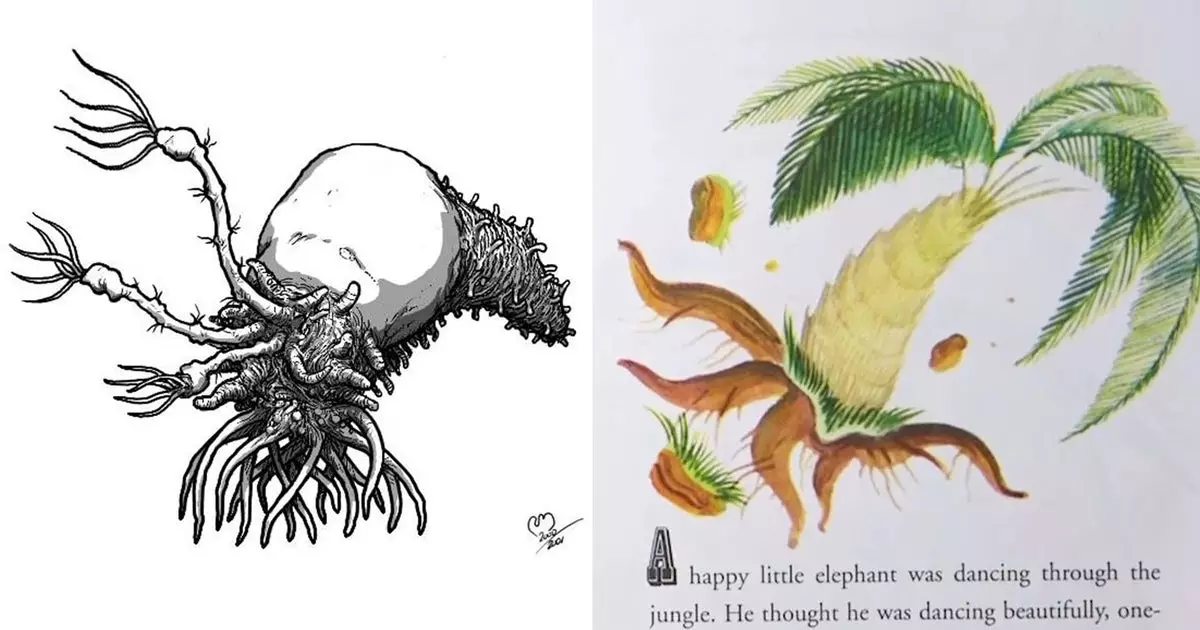The gaming industry has a storied past filled with innovations, creativity, and the occasional dark side of development challenges. One such moment worth celebrating is the 20-year anniversary of Halo 2, a landmark title in the realm of first-person shooters. Amidst the flurry of multiplayer map revivals and nostalgic reminiscing, recent interviews have shed light on the backstory of Halo 2’s creation, revealing surprising sources of inspiration and the very real pressures the developers faced.
As Halo 2 progressed under the guidance of Bungie, its creative team was a small but passionate unit. Notably, Robert and Lorraine McLees played integral roles during this time. In a fascinating twist, they revealed how a beloved children’s book, specifically “The Saggy Baggy Elephant,” provided the intriguing basis for the monstrous Flood creatures. Robert, who found himself wandering beyond his primary role as a weapons designer, drew upon his childhood memories to craft concepts for the Flood’s menacing forms.
The design journey of the Flood Infection Form specifically presents a captivating narrative. Initially, Robert created a creature that he described as an unappealing blend of a house centipede and a blood sausage. This bizarre mash-up, while grotesque, lacked the mobility that would come to define the Flood. As Robert revisited his memories while reading to his daughter, he rediscovered an image from his past that served as a springboard for innovation—the palm trees from Tenggren’s illustrations. The distinct roots of these trees suddenly conjured up the tendril-like legs of the Flood, allowing Robert to pivot and refine his design concept significantly.
While exhilarating stories of creative breakthroughs abound, the making of Halo 2 was not without its serious challenges. The notion of ‘crunch’—the intense period leading up to a project’s release when developers often work long hours—looms heavily over the narrative. Robert and Lorraine opened up about the emotional toll of this environment, especially as they juggled their professional responsibilities with the demands of new parenthood. Lorraine, who designed the iconic Pillar of Autumn spacecraft, encapsulated the stress and uncertainty many at Bungie felt during this highly pressured time.
This was not mere hyperbole; the toll on the team was palpable. Developers reported grueling seven-day work weeks, a reality echoed by Chris Butcher, who captured the dark sentiment that permeated their workflow, remarking on the dire stress and negativity that seemed inescapable. The looming question of their future with Bungie gave an amorphous anxiety to what was supposed to be a celebratory project.
Despite advancements in management practices and increasing awareness, the issue of burnout and unsustainable work demands continues to plague the gaming industry today. Current reports from studios working on major titles like Star Citizen and Diablo IV reveal that many developers are still subjected to the same unforgiving environments as those experienced at Bungie two decades ago.
The gravity of crunch, as well as its effects on creativity and team morale, prompts a pressing need for healthy work conditions within the gaming landscape. As more voices come forward, the hope is that studios will learn from the legacy created by those involved in Halo 2 and foster environments conducive to both creative output and personal well-being.
Reflecting upon Halo 2’s legacy, it become evident that the intertwining of creativity and hardship fueled the creation of one of gaming’s most revered titles. The serendipitous inspiration drawn from children’s literature exemplifies how artistry can emerge from unexpected places. Yet, it also serves as a reminder of the costs involved in delivering such iconic experiences—an ongoing challenge that the video game industry struggles with.
Therefore, as we celebrate the influential games of the past, it’s crucial to recognize the stories behind their development. They remind us that every pixel and audio clip undoubtedly carries the weight of human experience—both joyous and taxing. The story of Halo 2 is not just one of aliens and adventure; it is a narrative that intertwines creativity with human struggle, shaping a legacy that resonates even today.


Leave a Reply